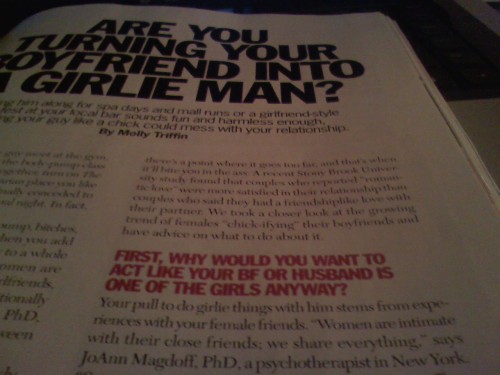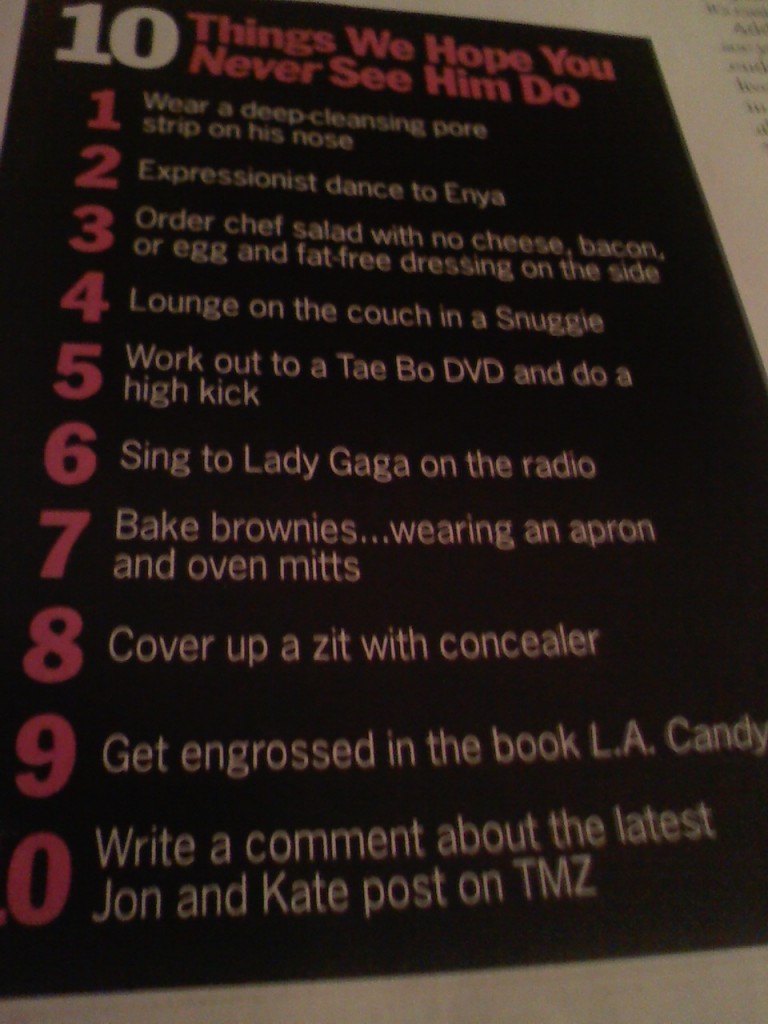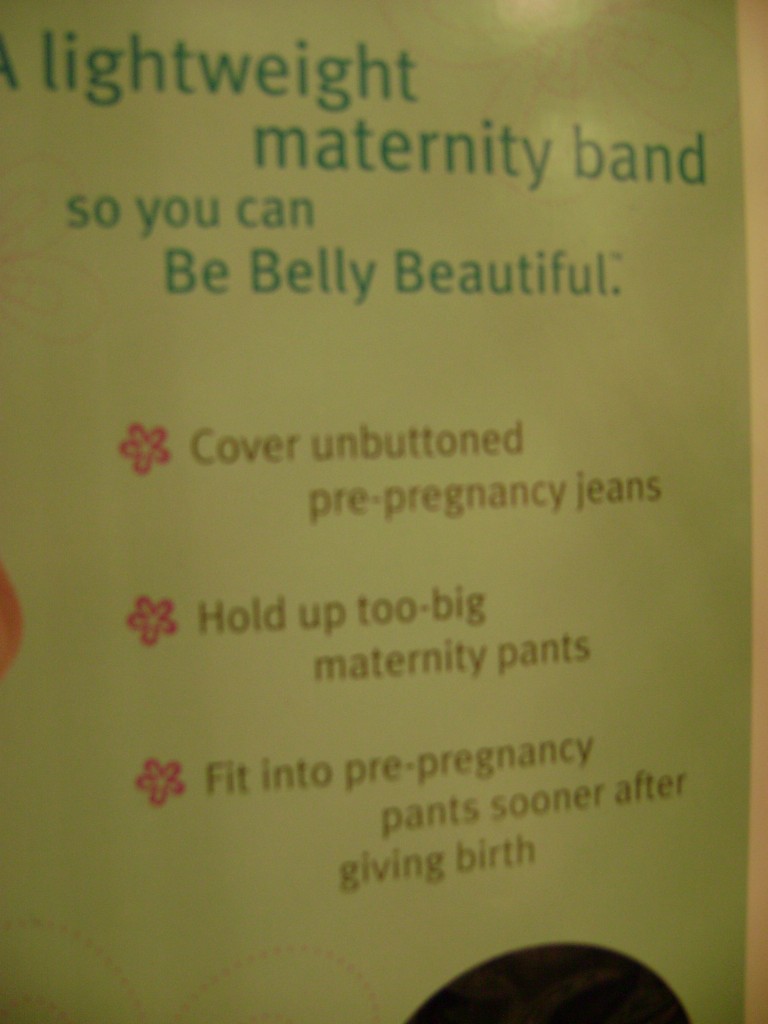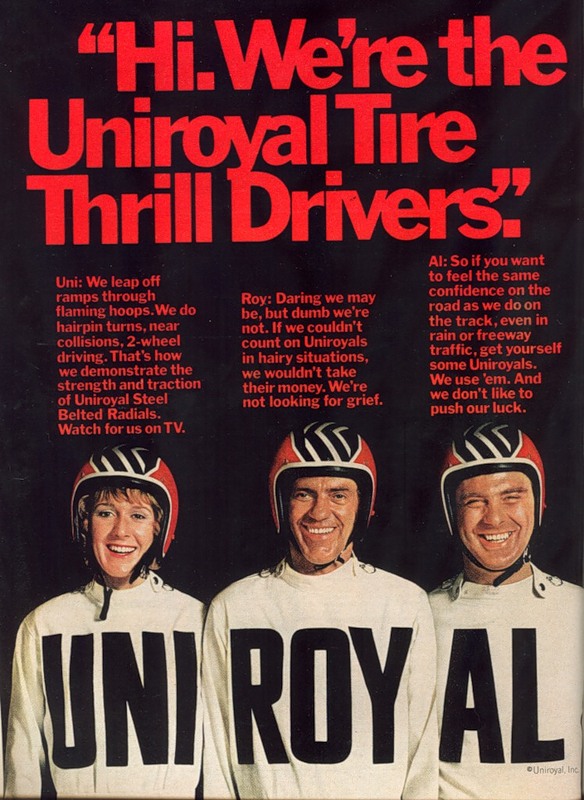Nikki L. sent in images of an article titled “Are You Turning Your Boyfriend into a Girlie Man?” from the February 2010 issues of Cosmo. Nikki says,
The article discusses how many women are treating their boyfriends like their girlfriends, making them go shopping, do yoga, and eat vegan food. It says the gender roles are being blurred, and that’s a good thing up to a point. The article says that eventually your man will push you away and resent you for making him girlie. It gives a list of things your man shouldnt be doing, as it might damage his masculinity…
The first page:
Notice the subtitle in red and the text below it:
First, why would you want to act like your BF or husband is one of the girls anyway? Your pull to do girlie things with him stems from experiences with your female friends. “Women are intimate with their close friends, we share everything,” says JoAnn Magdoff, PhD…
Yes. Why on earth would you want to recreate that type of relationship with a guy? Who wants to be intimate, emotionally close, and share everything with their partner? Yuck!
Here are some things you do not want your boyfriend/husband to do:
Just to reiterate: men cannot care too much about their personal appearance. They cannot try to eat healthily, or be vegetarian/vegan. If they’re gonna cook, they better not try to keep from burning their hands by wearing items specifically designed for that task. Sissies!
The article also provides a list of “manly date ideas” you can do with your guy to avoid turning him into one of the girls:
That’s just…stupid! It’s stupid! Gah! It’s such a ridiculous division of the world into the stereotypically masculine and the stereotypically feminine with policing to remind us that men must never be feminine. Ever! And women, stop emasculating men!
Men like meat! And pizza! Girls like chef salads without eggs, bacon, or cheese in them. Men like dogs! Women like cats. Have you ever known a woman who liked dogs? As if! Men like walking in the park and the beach. Except in movies where walking on the beach is portrayed as all annoyingly mushy and romantic, something men do because women like that sort of thing.
I’m also pretty sure if his favorite video game turns out to be Bejeweled, that goes up on the list of things you never wanna see.













